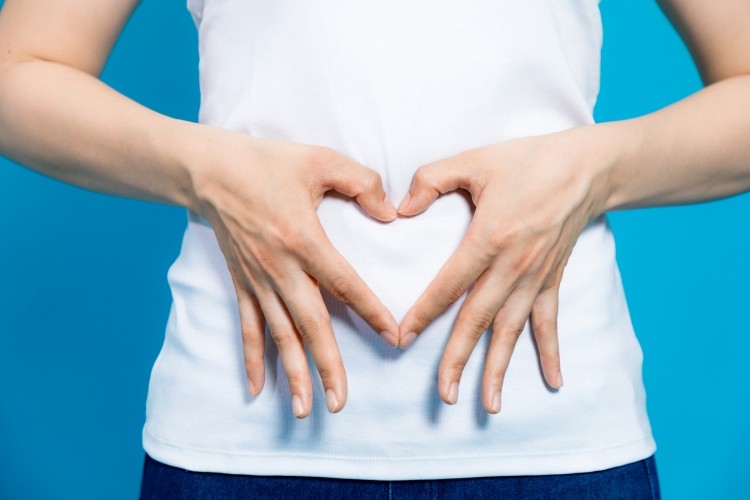Polyphenols show promise in shifting microbiome away from obesity states

The review article which was published in late December in the journal Frontiers in Nutrition, looks at the literature surrounding the question of microbiome/polyphenols interaction. Some of this evidence comes from studies conducted by the authors themselves, who are associated with the University of São Paolo and the São Paolo Food Research Center.
Huge number of variables complicates question
The authors noted that the question is complicated by the large number of variables involved. There are many dozens of polyphenols supplied by dietary sources, such as cacao, chocolate, coffee, tea, wine and many others. These are classified as either flavonoids or non-flavonoids.
Among the flavonoids there are several subclasses, such as flavones, flavanones, flavonols, flavan-3-ols, anthocyanidins and isoflavones. The authors said non-flavonoid compounds are even more diverse as a group, as they include phenolic acids, lignans, and stilbenes among others.
A number of factors affect the bioavailability of these compounds. Polarity, molecular mass, plant matrix, digestibility by gastrointestinal enzymes, and absorption on enterocytes and colonocytes can all help determine how a given compound behaves in the gut.
The microbiome, too, is highly diverse. The researchers said the main phyla shown to reside in the human gut are: Firmicutes, Bacteroidetes, Proteobacteria, Actinobacteria, and Verrucomicrobia. In healthy subjects, Bacteroidetes such as Prevotella and Bacteroides genera, and Firmicutes such as Clostridium, Enterococcus, Lactobacillus, and Ruminococcus genera, represent more than 90% of bacterial species.
Bacteria produce host of metabolites
The authors noted that many polyphenol molecules make their way to the colon where they are acted upon by gut bacteria. The picture of which species metabolize which polyphenols is starting to come into focus, they said.
“Some bacterias are related to the metabolism of polyphenols, especially Flavonifractor plautii, Slackia equolifaciens, Slackia isoflavoniconvertens, Adlercreutzia equolifaciens, Eubacterium ramulus, Eggerthella lenta, and Bifidobacterium spp, which participate in the metabolism of several polyphenols,” they noted.
The metabolites produced include hydroxycinnamic acids, hydroxyphenylproprionic acids, equol, urolithins, various short chain fatty acids and others. These compounds can be connected to things such as improved barrier function in the gut via the production of proteins associated with tight cell to cell bonds in the gut wall and other mechanisms. They can also have systemic effects beyond the gut environment itself, including reducing inflammation, increasing satiety and others.
Individualistic effects
The researchers noted that the way in which the gut microbiome interacts with polyphenols and what kind of metabolites are produced (and by extension, what kind of health effects could be expected from a given dietary intervention) are highly individualistic.
“Interindividual differences in the composition of the gut microbiota may lead to differences in the bioavailability and bioactivity of metabolites. These variations are associated with different metabotypes, which are characterized by the individual's ability to produce specific metabolites,” they noted.
“A recent clinical trial by our group to evaluate the bioavailability and metabolism of anthocyanins and ellagitannins showed that the gut microbiota catabolites both classes of polyphenols. However, some subjects excrete high amounts of polyphenol metabolites in the urine, whereas others excrete low amounts of metabolite. These findings indicate the high interindividual variability regarding polyphenol metabolism,” they added.
More data needed to elucidate mechanisms of action
Some broad strokes of how gut metabolites affect satiety and weight gain are already apparent, the authors noted. For example, it has been shown that weight gain and gut microbiota dysbiosis favor the growth of bacteria that produce isourolithin-A and urolithin-B rather than bacteria that produce urolithin-A. But a chicken and egg question presents itself here: Is the dysbiosis symptomatic or causative of a condition in which subjects trend toward obesity?
“The mechanisms by which polyphenols modulate the gut microbiota still need to be elucidated, but may involve both direct and indirect interactions. These compounds can directly stimulate or inhibit bacterial growth. Inhibition refers to the bactericidal or bacteriostatic effect of phenolic compounds, which inhibits the growth of potentially pathogenic bacteria while minimally affecting—or even increasing—the population of beneficial bacteria,” the authors said.
The authors said the future of the field looks promising, but much more data is needed, including “an effective association of metagenomics with other ‘omics’ data can clarify the complex biosynthetic pathways of the gut microbiota.”
“Evidence highlights the importance of the gut microbiota in metabolic diseases such as obesity and T2D, by affecting key pathways such as energy homeostasis and inflammation. Diet plays a prominent role in modulating the gut microbiota. The two-way interactions between polyphenols and the gut microbiota may contribute to host health benefits. This two-way interaction entails microbial degradation of polyphenols and modulation of gut microbiota by polyphenols and their metabolites, which inhibits pathogenic bacteria and stimulates beneficial bacteria,” they concluded.
Source: Frontiers in Nutrition
20 December 2019 | https://doi.org/10.3389/fnut.2019.00188
The Two-Way Polyphenols-Microbiota Interactions and Their Effects on Obesity and Related Metabolic Diseases
Authors: Faraldo Corrêa TA, et al.







